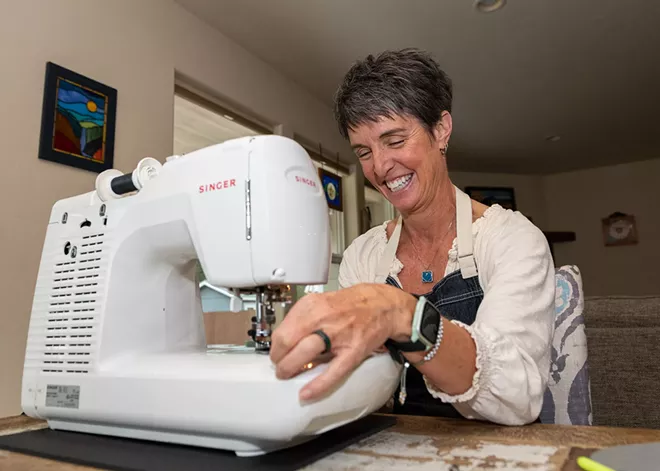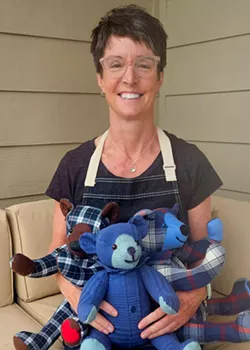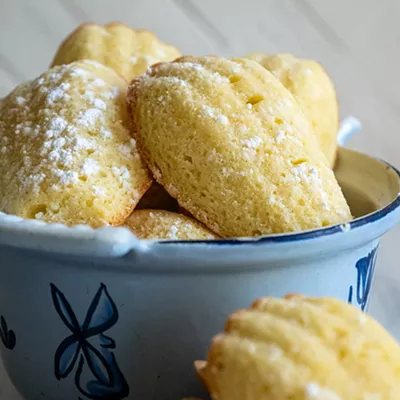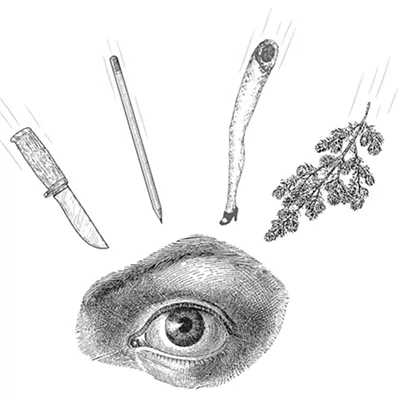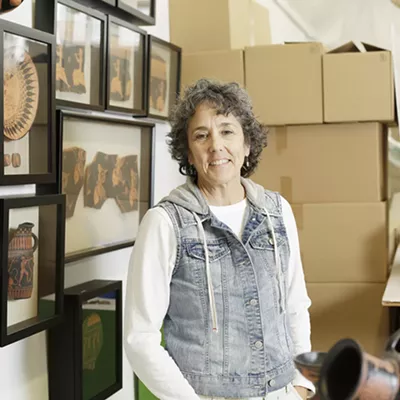"Everybody grieves, like every single person in the whole universe is going to grieve at some point," Michelle Sebern says. "If you haven't yet, you will."
Death can be hard to process. It's something that all of us will deal with at some point in our lives, but traversing the grief and heartache associated with it isn't impossible. At least, that's something Sandpoint resident Sebern believes.
In 2019, Sebern was working a travel nursing assignment in Missoula, Montana. She says she was at the top of her career, but when her assignment ended around the same time the pandemic began brewing, she retired.
"There's a lot of bureaucracy [at hospitals] especially when you get your master's degree and get put into leadership. It feels like you're just working for a corporation," she says. "So, I made the decision that I wanted to do something more heart related, more community related."
It just so happened that around the same time one of her best friends was starting a nonprofit in Bend, Oregon, called the Peaceful Presence Project. The organization trains end-of-life doulas to ensure that folks can live and die with dignity. These doulas provide nonmedical support — emotional, spiritual and physical — to people nearing the end of their life.
“Every single person in the whole universe is going to grieve at some point. If you haven’t yet, you will.”
Sebern spent three years on the nonprofit's board of directors, and in that time she trained to become a death doula. She planned to bring that knowledge to Sandpoint, where she's resided for the last decade, but she soon realized that type of care might not be as accepted as it was in Bend.
"I thought, that's gonna be awesome in Sandpoint, I wanted to bring that forward," she recalls. "But when I got here I realized that conversation is just really hard to tap into, because who wants to talk about death and dying?"
That realization didn't dissuade her, instead she worked harder to think of an outlet for that type of energy in the community. Then one day she stumbled across memory bears. These teddy bears created with fabric from the clothing of a loved one who's died, are really a way to tap into the grieving process without actually talking about it.
"Talking about death and dying and talking about the grief that they're experiencing from loss is not easy for people, but talking about bears is a piece of cake," she says with a warm smile.
MAKING A MEMORY BEAR
The process of getting a memory bear is fairly simple. After someone reaches out to Sebern through her Facebook or website (thememorybearmaker.com) asking for a bear, they'll then talk about the material they'd like to use. T-shirts, sweaters, dress shirts, flannels. Basically, if you can wear it, she can turn it into a bear.
She'll also ask about smaller details, such as their favorite color, to add into a little heart on the bear's foot.
"I get a lot of people who are widows, and then also a lot of women who want to preserve the legacy of their dad or their husband," she says. "They want to have gifts made for the kids or the grandkids, and so there's a lot of that legacy gifting going on."
More than anything, Sebern says she loves learning the stories of these people through their clothes. From a few holes or flecks of paint on a shirt, she can put together the puzzle pieces of their life.
"A lot of times someone will drop clothes off, and I'll always get the 'Well, I brought you two. This one is something he never wore, but it's in great shape so it might be great for a bear. And this one, well, he always wore it, but it's all splattered with paint and damaged,'" she says. I always use that one, the one that's got the paint and everything on it, because it tells a story. You can see the colors of his paint that he painted his house with, and you can see some of the things that he experienced."
In total it takes Sebern about six hours over three days to make one bear. So far, she's made about 50 of them.
And it's all free. Sebern doesn't charge any of her clients a cent to memorialize their late loved one into a huggable stuffed animal.
"They do cost quite a bit to make, but I don't want any money for my time. I'm being intentional about that," she explains. "There's a lot of expectation that comes with money. There's a lot of people I get that might not take the time to engage in getting a memory bear made for themselves during their grieving process if it costs money."
Sebern has a pay-it-forward list on Amazon, and she takes donations in-person or through Venmo to keep her craft at least partially funded, but she can't see a time when she would ever charge someone to make their memory bear.
FABRICATING A RITUAL
Creating these cherished keepsakes can take an emotional toll, but Sebern's training through the Peaceful Presence Project has prepared her for this work.
"It is emotional. We cry a lot outside of my driveway as I'm passing off bears," she says. "But it doesn't wear on me because I feel like it's something that is really beneficial and empowering for people."
However, the experience was somewhat surprising to Sebern. She expected her clients would be emotional at both the dropoff and pickup, but that just wasn't the case.
"They often give me the clothes and tell me a little bit about the person, but they're not emotional at that time," she says. "Then they come and they get the bear and, I mean, it stops them dead in their tracks."
While its impact is small in scope, Sebern believes her work with memory bears creates some sort of routine around death that isn't common in the U.S.
"When it comes to death and grieving, we as a culture are not so hot at it. Here when somebody dies we call the coroner, and they come and take the body away, and it's fast and furious, and there's no real ritual around it in general," she explains. "So having a memory bear created is a ritual in a lot of ways. It kind of causes people to pause and slow down and think about [death] and process it in ways that other cultures might."
While Sebern doesn't want to create a business or nonprofit, she is currently teaching others in her community how to make these bears. In the end, her goal is to create hybrid sewing-grieving groups where people can get together to make these memorable keepsakes and work through their feelings in a community-oriented way.
"I just love the community part of it," she says. "There's more people that want to help than I have bears to create."


